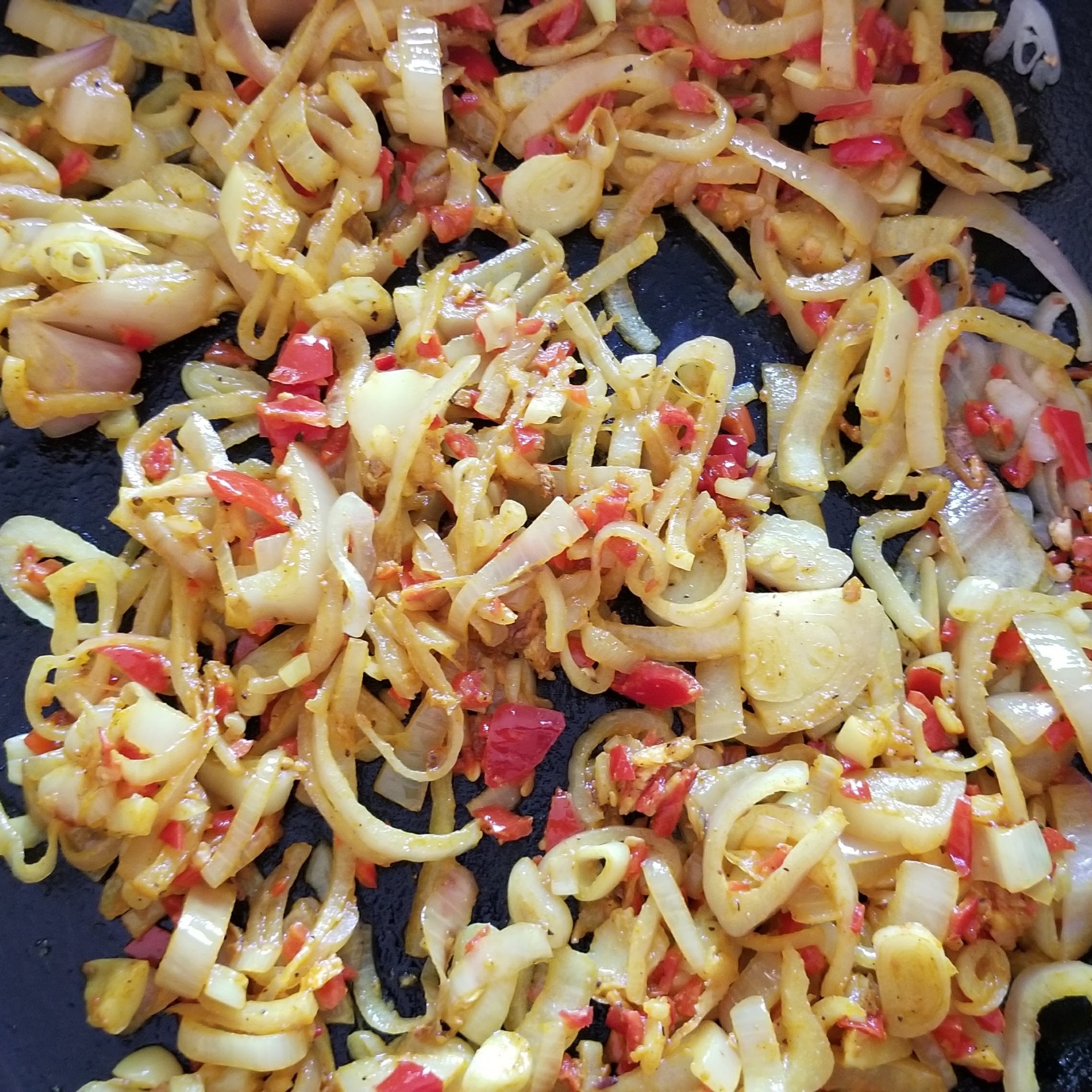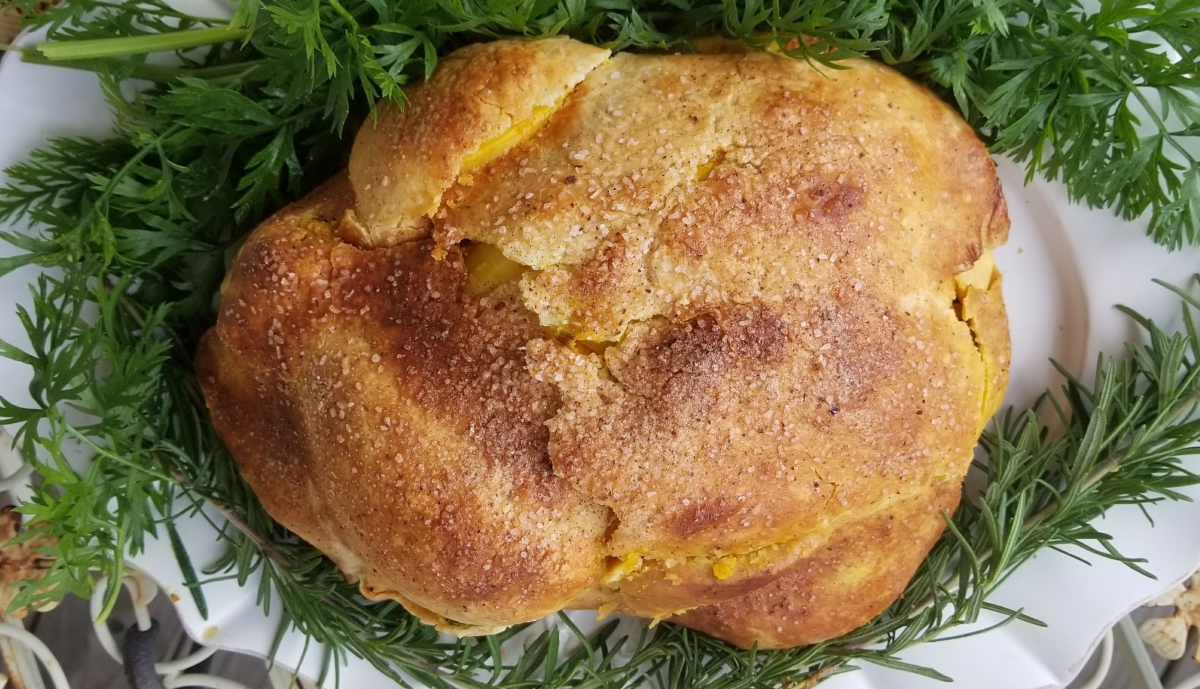I love this dish. It’s packed with flavor, specifically the flavors of West Africa. It also incorporates a few more “exotic” ingredients typical of East Africa and its trade connections. In that way, we can say this spicy, sweet, tomatoey fish stew is in honor of the great Bantu expansion, when the Bantu peoples of West Africa embarked on many waves of migrations which successively took over much of the continent south of the Sahara.
Paired with fufu or with corn porridge, let this dish and all it’s many flavors transport you to Africa.


RUSTIC AFRICAN FISH STEW
2-3 filets White Fish, cooked*
1/4 cup palm oil
2-4 pounds Tomatoes, rough diced (or a large can of whole peeled tomatoes)
1 lb. fresh Red Chili Peppers, de-seeded and sliced (African or Jamaican varieties best here)
1 Head of garlic, peeled and smashed
1 small ginger root, peeled and minced
1 onion, sliced
2 tbsp. black peppercorns, coarse grind
1 tbsp. ground tumeric
2 lbs. mixed bitter greens *
2 tbsp. tamarind paste*
2 tbsp brown sugar
1/2 cup vinegar
*On the fish:
-Stews, especially in Sub Saharan African, are meant to be like… well, a stewpot! Throw in what you have! Incorporate last night’s dinner! So that’s what I did, in my case it was some char grilled tilapia.
– This recipe works great with raw fish too, if you’d rather use that. It has a stronger seafood flavor though. I’ll include down in the instructions how to cook it both ways.
*Note that tomatoes and chilis are only in African cuisine post contact with the New World and the Columbian Exchange, but these days are pretty quintessential to African cuisine. Additionally, tamarind, ginger, and black pepper are ingredients from East and Central Asia, which made their way around Sub Saharan Africa via trade networks across the Indian Ocean
*Before I got cooking, I went outside and harvested some wild and garden greens to cook into my stew.




Dandelion, frisee, and arugula.
Once your ingredients are picked and prepped, the cooking part is pretty simple.
In a stewpot or dutch oven, warm up the palm oil over medium heat and saute the onion, ginger, and black pepper for a few minutes until a little soft.
Add the hot red pepper, tumeric, and the smashed garlic cloves and continue to cook for 5 more minutes, when things are just starting to brown up. Add the vinegar and deglaze the bottom of the pot before adding in all the tomatoes, sugar, and tamarind paste.
Bring the mixture to a boil, then immediately turn down to a simmer. Cook on low for 1-2 hours.




When everything is nicely melded and cooked down, add the greens. It will seem like a lot, but cook down quite quickly.


This is when you’d add the raw fish if that’s what you’re using. Let the fish simmer in the sauce until it flakes apart. If using pre-cooked fish, add at the very end of cooking, turning off the heat as soon as you do. Flake the fish apart and let it warm up in the still hot mixture.






























































